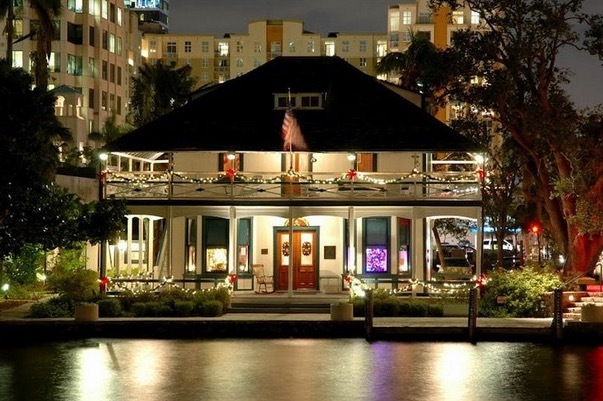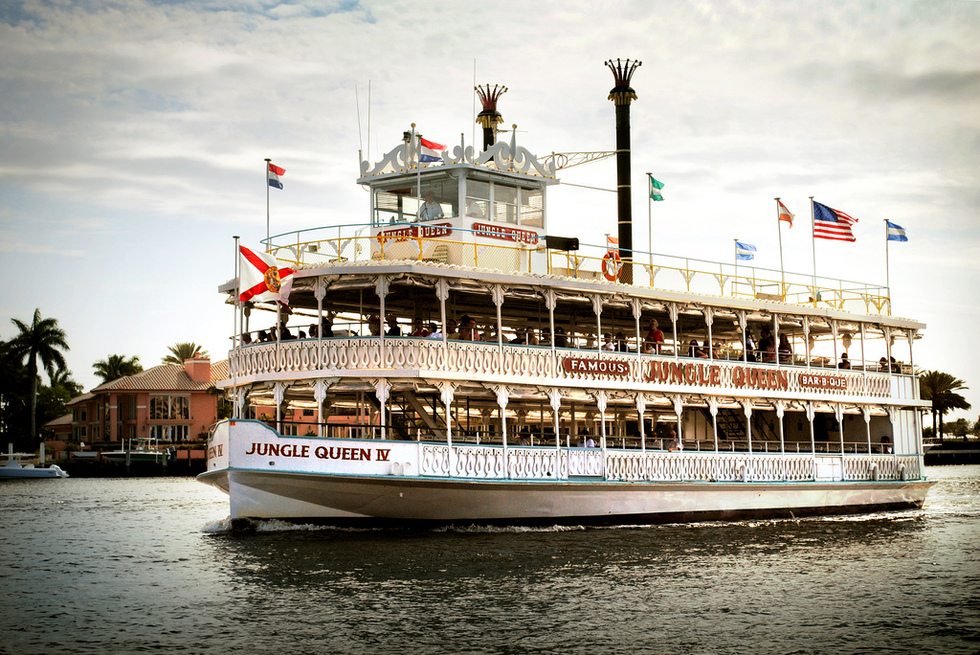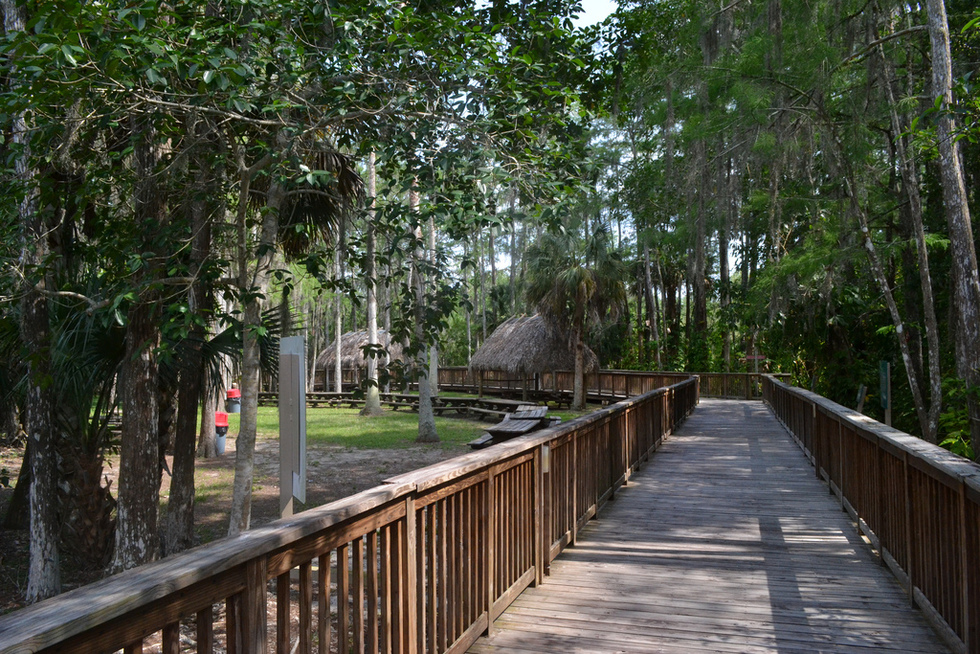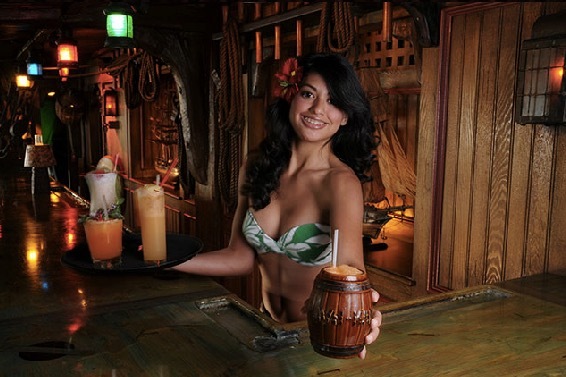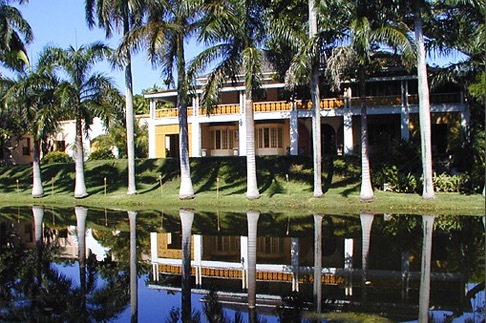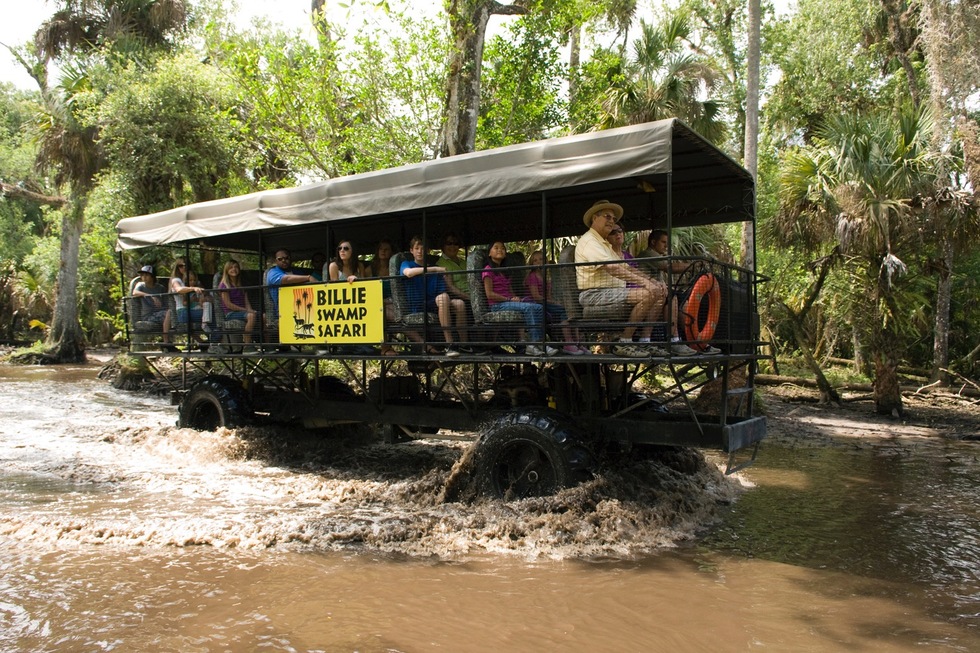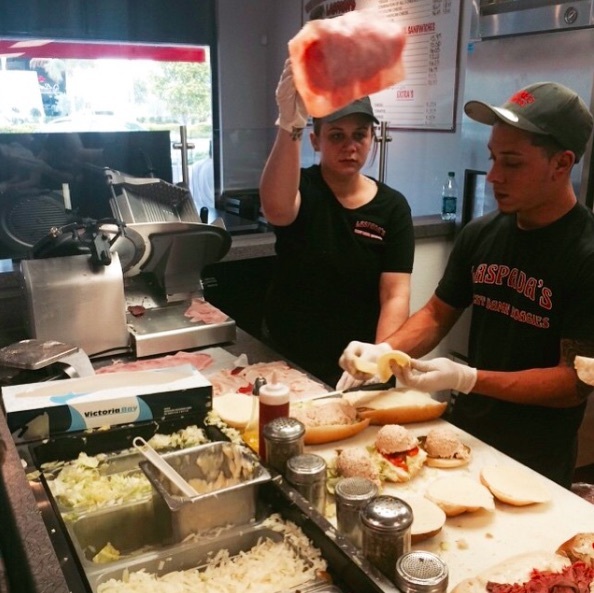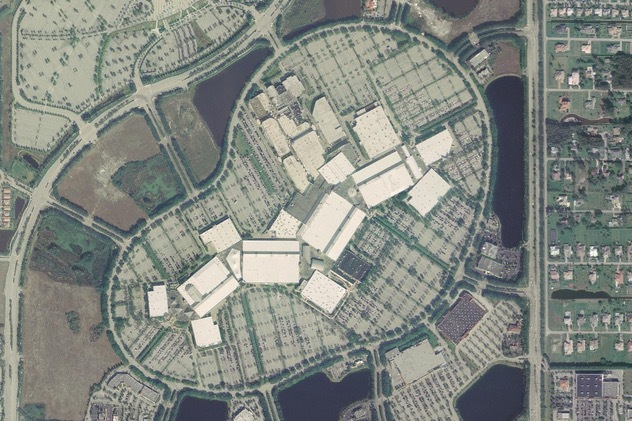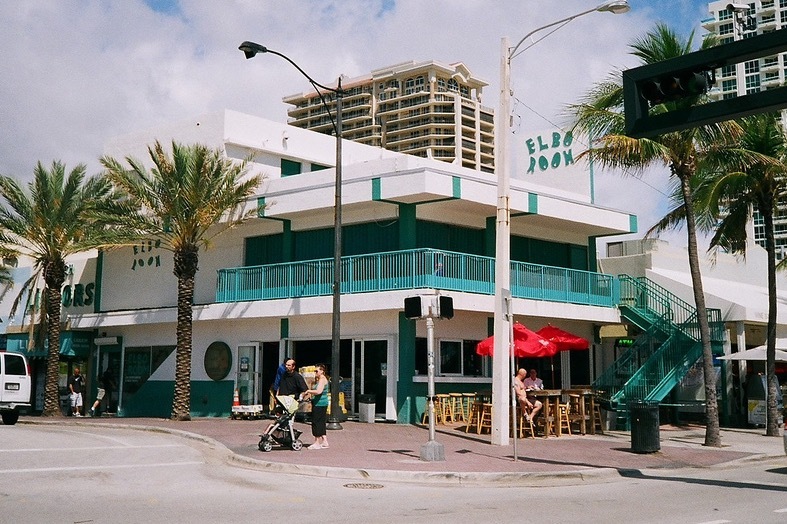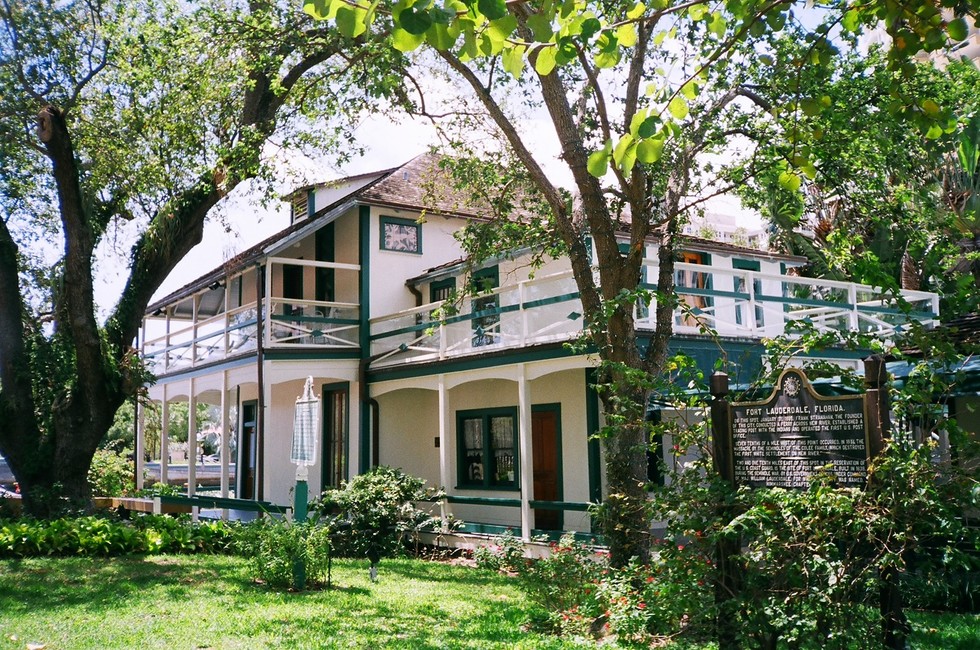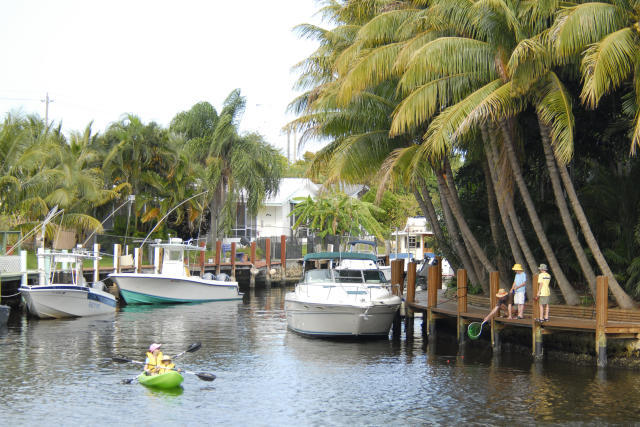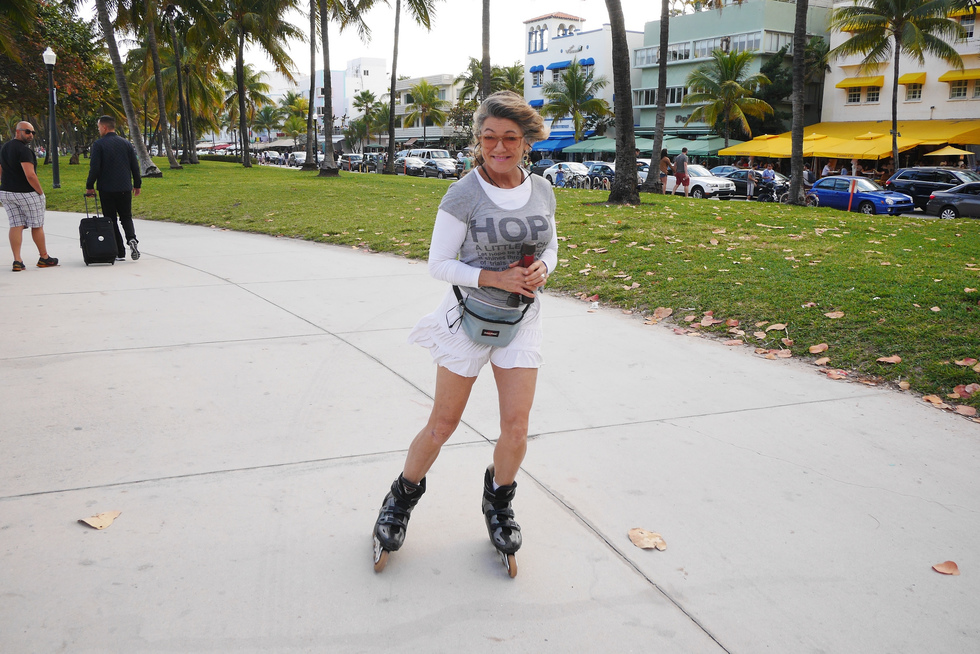What to Do in Fort Lauderdale (That Isn't the Beach)
By Jason CochranMore than 4 million cruise passengers pass through Fort Lauderdale's Port Everglades a year. This southeastern Florida city may have high tourism arrivals on paper, but in practicality, it actually gets short shrift—most of those cruise visitors zip directly between the pier and the airport, missing a golden chance to explore. We throw no shade at the good science and art museums, but Fort Lauderdale has always thrived from a mix of pioneer, Seminole, and tourist influences. Visitors have always been a pillar of the city, so many of its most distinct things to do are, in a way, bits of tourism history that still are still waiting to be found—if only the cruise line shuttle bus didn't whisk visitors straight from baggage claim to the ship gangway.
Besides, contrary to legend, Fort Lauderdale can get chilly in the winter. What are you going to do if you won't swim?
Jungle Queen
he Jungle Queen riverboat has been plying the New River since 1935, when the still-undeveloped area was thick with trees and worthy of the reference. Now the open-air faux paddlewheel passes multimillion-dollar yachts, waterfront mansions, and a tower-studded downtown. But its destination, an onshore eat-with-your-hands barbecue and vaudeville-style show deep inland, keeps this family-friendly South Florida tradition comfortably rooted in Florida's riverboating past.
Ah-Tah-Thi-Ki Seminole Indian Museum
In the mid 20th century, a popular tourism trend in Florida was the Indian tourist camp. Families would pull over and wander into re-created Seminole villages to watch modern-day Seminole demonstrate the way their people once lived. One of those old attractions, the Ah-Tah-Thi-Ki Seminole Indian Museum on the Big Cypress Seminole Indian Reservation, is still operating. An hour west of Fort Lauderdale, reached by a mile-long boardwalk under Cypress trees, villagers still greet tourists to demonstrate traditional arts and crafts, which they also sell. (Call ahead to make sure the village is populated on the day you're there.) There's also a substantial museum on Seminole history—its library is one of the best archives in the world on the topic.
Mai-Kai Restaurant
Not gonna lie. It's touristy, cheesy, and overpriced—but it's also a lot of fun. The Mai-Kai opened in 1956 at the height of the Hawaiian-Tiki craze, poaching recipes and staff alike from the famous Don the Beachcomber's. There's a 50-minute island-themed floor show (which costs extra) and the food is nothing to hula about, but the real reason to go is the intensity of the kitsch: powerful rum cocktails in souvenir goblets, sarong-wrapped waitresses, and the thick atmosphere of dark wood and foliage that is now six decades old. It's on the National Register of Historic Places.
Bonnet House
If you want to understand why Florida became so popular, drop by for a guided tour of the idyllic Bonnet House estate, which was built a century ago right on the beach. You can't tell from outside its walls, but it's a virtual Eden of leafy gardens, palm trees, ponds, breezy verandahs, and fantastic art left behind by Gilded Age bohemians—do not miss the exquisite and nearly impossible-to-accomplish bust of a veiled woman by sculptor G.B. Lombardi. So this is what the good life in Florida was supposed to be about. But because Florida can be Florida, rapacious developers are persistently trying to knock down this slice of heaven and knock up some luxury condos.
Bonus pop culture trivia: If you're a fan of CBS's The Amazing Race, this cloistered spot was the finish line for the season that Uchenna and Joyce won.
Bonus pop culture trivia: If you're a fan of CBS's The Amazing Race, this cloistered spot was the finish line for the season that Uchenna and Joyce won.
Billie Swamp Safari
An alligator pit! Florida panthers! Hour-long swamp tours aboard "swamp buggies"! For crying out loud, the Venomous Snake Show! Really, this 2,200-acre Everglades-themed Billie Swamp Safari nature park sells itself.
LaSpada's Original Hoagies
LaSpada's, operating since 1973, has a location right by the cruise port on 17th Street near Port Everglades. It's probably the best sandwich shop in the state, if not the country. Ask a local—they'll tell you. Squeeze past the line out the door and you'll see why: Clerks slice meat to order and toss it across the room to a colleague who catches it in the bread and piles it so high with fixings that you'll need two hands to lift it and several stomaches to fit it. Upon departure from Fort Lauderdale, many a cruise cabin has been humming with the aroma of onions from these mystically delicious—and massive—masterpieces.
Sawgrass Mills
They come by the busload—to a mall. A mighty big one: the seventh-largest in America, with 350 stores and retail space that's equivalent to 40 football fields. But it's an oft-repeated claim that Sawgrass Mills, 13 miles west of Fort Lauderdale in Sunrise, FL, is Florida's secondmost-visited tourist attraction after the Mouse, and judging by the swarms of out-of-towners (especially South Americans) lugging new purchases into its parking lot that holds 11,000 cars, that indeed may be true. With so many people flooding the state from overseas and looking for bargains, outlet malls have become a Florida staple, and Sawgrass Mills is their king.
Elbo Room
Remember 1960's Where the Boys Are? When Fort Lauderdale was heaving with coed flesh and you could barely move? When George Hamilton was young and nubile?
It can all be hard to remember, and you probably also don't remember the part of the movie when one of those drunk college girl characters was sexually assaulted and spent the rest of the movie in the hospital. Well, never mind. The Elbo Room bar had a large presence in that film, and fortunately for it, people have pretty much forgotten all the awful aspects of Where the Boys Are and simply cherish the slice-of-time bar, which still stands on the corner of Las Olas Boulevard and the beach road, A1A. It's just a beer hall across the road from the beach, but it honors its past, and in an increasingly consumeristic Florida, both of those things are refreshing.
It can all be hard to remember, and you probably also don't remember the part of the movie when one of those drunk college girl characters was sexually assaulted and spent the rest of the movie in the hospital. Well, never mind. The Elbo Room bar had a large presence in that film, and fortunately for it, people have pretty much forgotten all the awful aspects of Where the Boys Are and simply cherish the slice-of-time bar, which still stands on the corner of Las Olas Boulevard and the beach road, A1A. It's just a beer hall across the road from the beach, but it honors its past, and in an increasingly consumeristic Florida, both of those things are refreshing.
Stranahan House
Not so long ago, Florida was as much as a frontier as the American West, with very few European-descended people putting down stakes to forge new communities in untamed, native-held areas. Fort Lauderdale's oldest building was built on the New River in 1901 by Frank Stranahan, who ran it as a trading post back when there was nothing else around—visiting Seminole would dock their canoes and sleep on the porch before heading back into the Everglades with their goods. In time, the tall buildings of the city grew around it, partly thanks to the bank that Frank founded—and when that went bust in the Great Depression, he walked through his back yard and drowned himself in the river. The Stranahan House is deservedly on the National Register of Historic Places, and there are daily guided tours.
Riverwalk and the New River
The Idol Dancer exposed Fort Lauderdale to a global audience and helped launch its reputation, but this day, no one is sure exactly where Griffith's crew worked. He soon realized muggy Florida was no substitute for dry Hollywood and went back to California to kick United Artists in high gear with Charlie Chaplin and Mary Pickford. If you can figure out where Griffith shot, Fort Lauderdale (and film historians) will thank you.
Archeologists frequently dig up signs of prehistoric life all around the New River, but there's one thing that eludes them: Where D. W. Griffith shot. The cinema pioneer, thinking Florida might be an ideal place to film, set up somewhere on the river in 1919 for his follow-ups to The Birth of a Nation and Intolerance, called The Idol Dancer and The Love Flower. Back then, the New River was so thick with tropical vegetation it stood in for Polynesia, but now it's a pleasant place to walk and pause at cafés and bars, especially in the developed Riverwalk district downtown. A free city trolley criss-crosses the sites, and a Water Taxi fleet does the same thing from the beach area by water, passing the city's biggest mansions and yachts.
The Idol Dancer exposed Fort Lauderdale to a global audience and helped launch its reputation, but this day, no one is sure exactly where Griffith's crew worked. He soon realized muggy Florida was no substitute for dry Hollywood and went back to California to kick United Artists in high gear with Charlie Chaplin and Mary Pickford. If you can figure out where Griffith shot, Fort Lauderdale (and film historians) will thank you.
Miami
There, we said it. The two cities tend to exist in their own orbits and a subtle rivalry simmers, but as a traveler, you don't have to care about that. Forty-five minutes down I-95, you'll find the larger Miami, one of the most vibrant cities in the American South, alive with a blend of cultures, including Caribbean, Cuban, and club. No sense ignoring its riches just because the people of Fort Lauderdale would rather have you to themselves.





